Find Help
More Items From Ergsy search
-
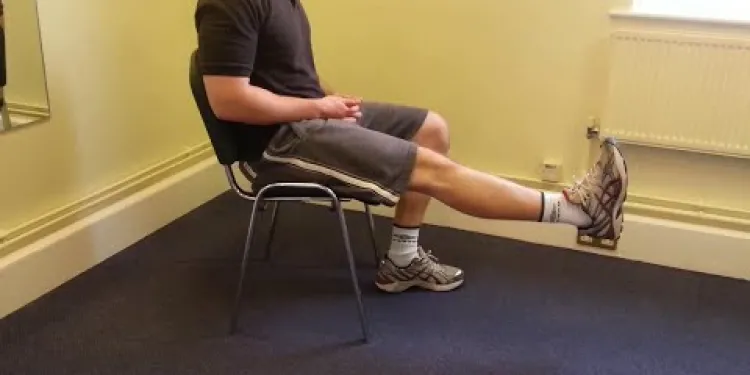
Knee Care Exercises
Relevance: 100%
-
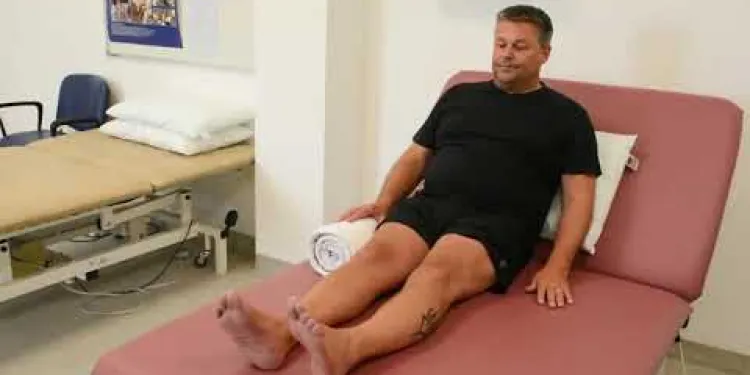
Joint School - Knee Exercises
Relevance: 78%
-

Knee replacement
Relevance: 57%
-

Total knee replacement
Relevance: 57%
-

Neck Care Exercises
Relevance: 53%
-

Total Knee Replacement
Relevance: 51%
-
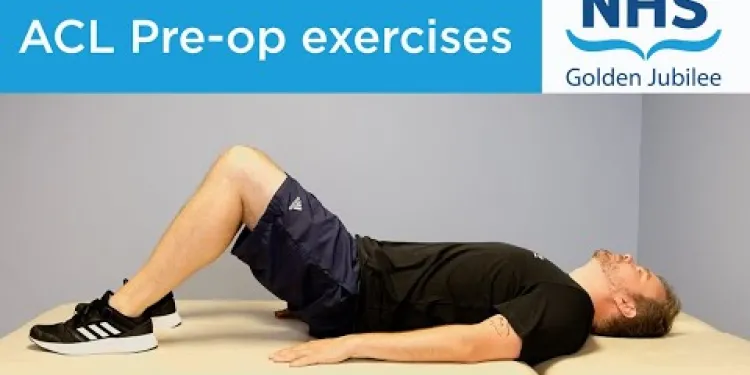
ACL pre-operation exercises
Relevance: 48%
-

ACL exercises post-operation
Relevance: 47%
-

Exercises for sciatica: herniated or slipped disc | NHS
Relevance: 37%
-

Shoulder Exercises 1
Relevance: 36%
-
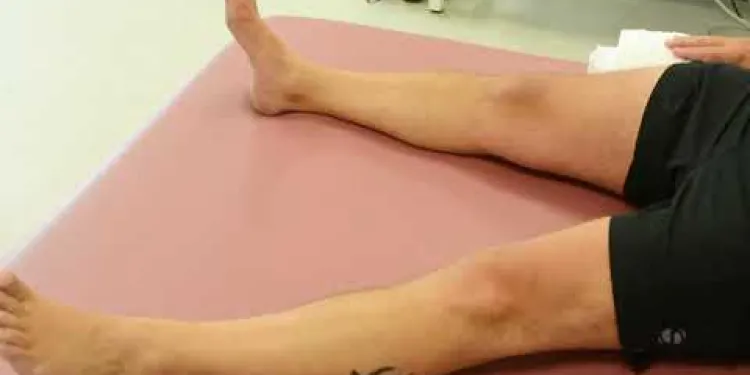
Joint School - Hip Exercises
Relevance: 36%
-

Your anaesthetic choices for your planned hip or knee replacement surgery at the RUH.
Relevance: 36%
-

Exercises for sciatica: piriformis syndrome | NHS
Relevance: 35%
-
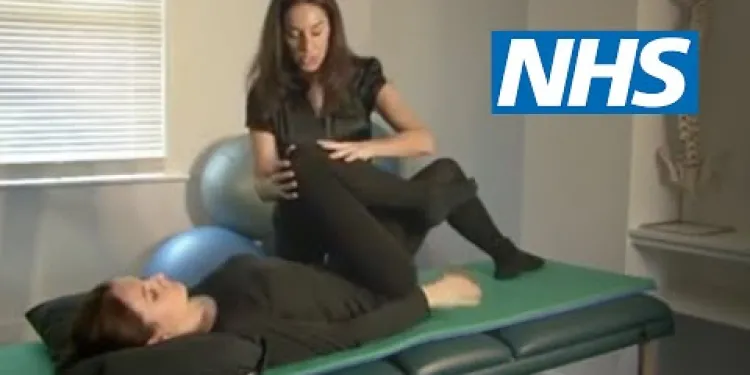
Exercises for sciatica: spinal stenosis | NHS
Relevance: 35%
-
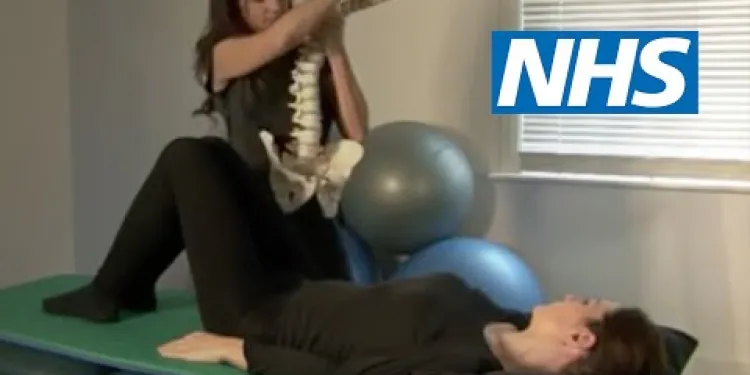
Exercises for sciatica: herniated or slipped disc | NHS
Relevance: 34%
-
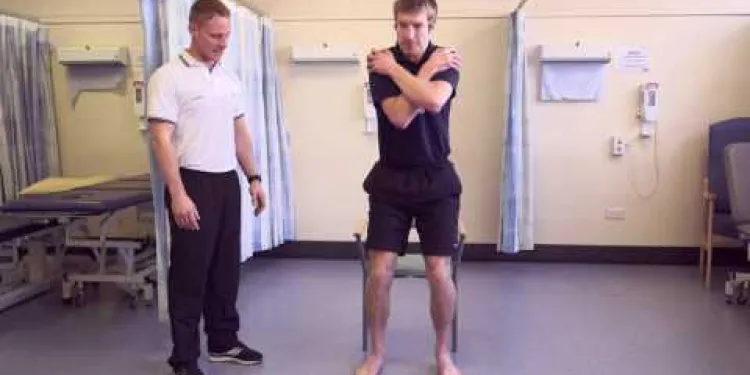
Exercises to help your lateral hip pain
Relevance: 33%
-
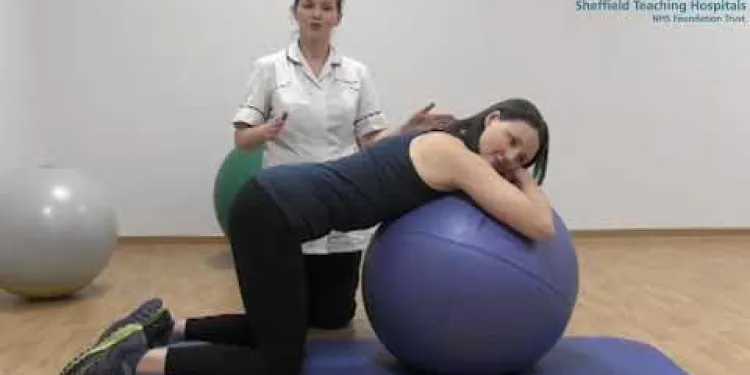
Mat and gym ball exercises with pregnancy related Pelvic Girdle Pain
Relevance: 33%
-

Falls Prevention - strength and balance exercises
Relevance: 32%
-

How to do pelvic floor exercises | NHS
Relevance: 32%
-
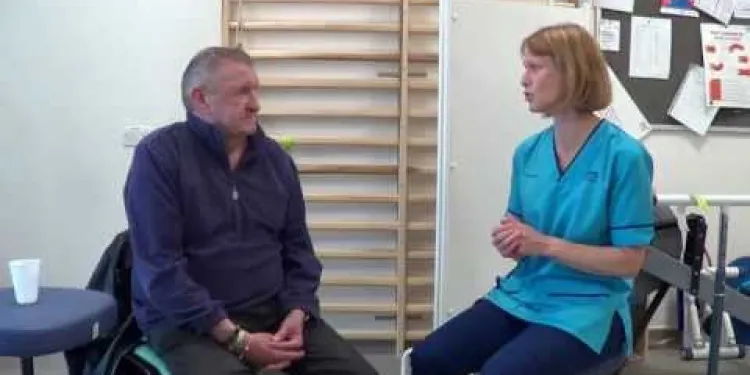
Clearing Your Chest with Breathing Exercises
Relevance: 31%
-

Exercise in patients with a neuropathy
Relevance: 31%
-

Neck Exercises
Relevance: 31%
-

Neck Exercises
Relevance: 31%
-

Can I do abdominal exercises during pregnancy?
Relevance: 30%
-
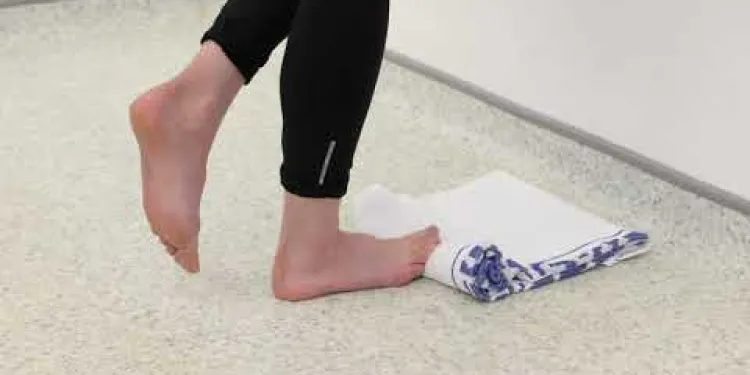
Plantar Fascia Loading Exercise (High Load Exercise)
Relevance: 30%
-

Dementia Care at Colten Care
Relevance: 30%
-

Facial exercise programme
Relevance: 29%
-
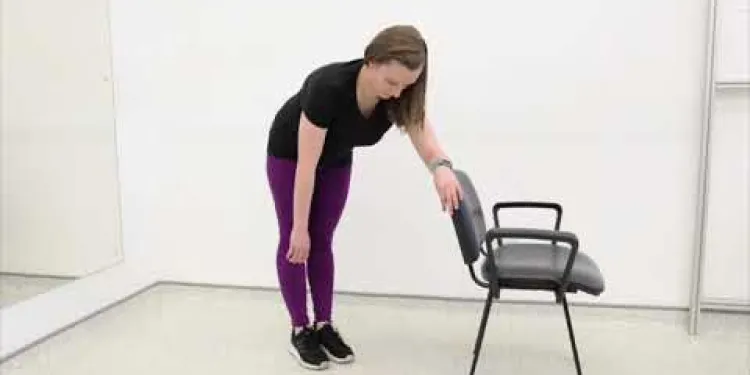
Frozen shoulder Pendular Exercises
Relevance: 29%
-

Is it safe to exercise with a cold?
Relevance: 29%
-

Does physical exercise help people with CFS?
Relevance: 29%
-

Self care for your feet - Podiatrist
Relevance: 28%
-

Do care homes provide medical care?
Relevance: 28%
-

Can exercise worsen whiplash symptoms?
Relevance: 28%
-

Is it safe to exercise outside during a heatwave?
Relevance: 28%
-

Will I be able to engage in physical exercise?
Relevance: 28%
-

Can I do high-impact exercises while pregnant?
Relevance: 27%
-
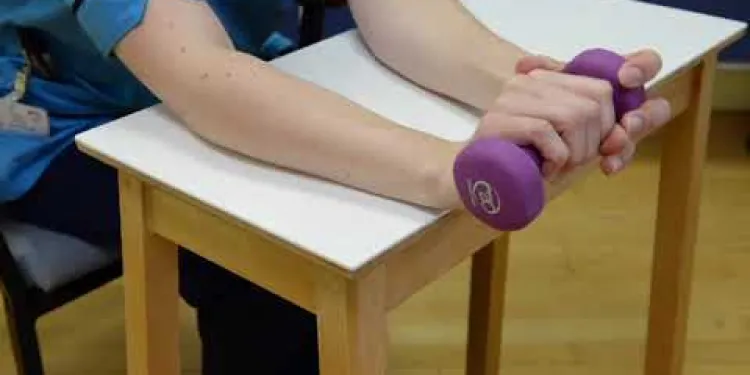
Elbow Eccentric Strengthening Exercise
Relevance: 27%
-

The role of care homes dedicated to caring for people living with dementia and memory loss
Relevance: 27%
-

Exercise Routines for Busy Parents
Relevance: 27%
-

Are activities provided for residents in care homes?
Relevance: 27%
Knee Care Exercises: Keeping Your Knees Healthy
Introduction
In the United Kingdom, many individuals experience knee problems due to various factors such as ageing, injuries, and underlying health conditions. Implementing a routine of knee care exercises can help in strengthening the knee joints, improving flexibility, and managing pain. This guide provides essential information about effective knee care exercises to maintain and enhance knee health.
Warm-Up Exercises
Before diving into specific knee exercises, engaging in a proper warm-up is crucial to prevent injuries. A simple warm-up can include:
- 5-10 minutes of low-impact cardio like walking or cycling.
- Gentle stretches targeting the muscles around the knees, such as hamstring stretches and quadriceps stretches.
Strengthening Exercises
Strengthening the muscles around the knee, particularly the quadriceps, hamstrings, and calf muscles, can significantly reduce knee pain and improve stability. Recommended exercises include:
- Squats: Perform bodyweight squats or use a chair for support to enhance quadriceps and gluteal muscles.
- Leg Raises: Both straight leg raises and side leg raises help in strengthening the quadriceps and hip abductors.
- Calf Raises: Stand on a step or flat surface and slowly raise your heels to work on the calf muscles.
Flexibility Exercises
Flexibility exercises improve the range of motion in the knee joint, which is essential for daily activities. Some effective stretches are:
- Hamstring Stretch: Sit on the floor with one leg extended and reach towards your toes to stretch the back of your thigh.
- Quadriceps Stretch: Stand and pull one foot towards your buttocks, holding it with your hand to stretch the front thigh muscles.
- Calf Stretch: Place your hands against a wall, step back with one leg, and press your heel down to stretch the calf muscle.
Balance and Stability Exercises
Improving balance and stability is essential for knee health, as it helps in preventing falls and enhancing overall joint function. Try these exercises:
- Single-Leg Stands: Stand on one leg for 30 seconds, gradually increasing the duration as balance improves.
- Bosu Ball Exercises: Use a Bosu ball to perform squats and leg stands to challenge your balance and stability.
Conclusion
Incorporating these knee care exercises into your regular fitness routine can lead to healthier, stronger knees, and potentially reduce the risk of pain and injury. Always consult with a medical professional or physiotherapist before beginning any new exercise program, particularly if you have existing knee issues or other health concerns.
Knee Care Exercises: Keeping Your Knees Healthy
Introduction
In the UK, many people have knee problems. This can happen because of getting older, getting hurt, or being sick. Doing special exercises can help your knees. These exercises make your knees stronger, more flexible, and can help with pain. This guide will tell you about some easy exercises to keep your knees healthy.
Warm-Up Exercises
It is important to warm up before you start exercising. Warming up helps to keep you from getting hurt. You can warm up by doing:
- Walking or cycling slowly for 5-10 minutes.
- Gentle stretches for the muscles around your knees, like stretching your hamstrings (back of thighs) and quadriceps (front of thighs).
Strengthening Exercises
Making the muscles around your knees stronger can help with pain and make your knees more stable. Here are some exercises that help:
- Squats: Do squats using just your body weight, or sit down and stand up from a chair to make your thigh and bottom muscles stronger.
- Leg Raises: Lie on your back and lift your leg up straight (straight leg raise) or lift it to the side (side leg raise) to make your thigh and hip muscles stronger.
- Calf Raises: Stand on a step or flat surface. Slowly lift your heels to strengthen your calf muscles.
Flexibility Exercises
These exercises help your knees move better, which is important for daily life. Try these stretches:
- Hamstring Stretch: Sit on the floor with one leg straight. Reach towards your toes to stretch the back of your thigh.
- Quadriceps Stretch: Stand and pull one foot towards your bottom with your hand to stretch the front thigh muscle.
- Calf Stretch: Place your hands on a wall. Step back with one leg and press your heel down to stretch your calf muscle.
Balance and Stability Exercises
Being able to keep your balance is important for strong and healthy knees. Here are some exercises that can help:
- Single-Leg Stands: Stand on one leg for 30 seconds. Try to stand for longer as your balance gets better.
- Bosu Ball Exercises: Use a Bosu ball to do squats and stands. This makes your balance and stability better.
Conclusion
By doing these knee exercises regularly, your knees can get stronger and healthier. This can help avoid pain and injuries. Always talk to a doctor or physiotherapist before starting new exercises, especially if you already have knee problems or other health issues.
Frequently Asked Questions
What are some effective exercises for strengthening the knee?
Effective exercises for strengthening the knee include straight leg raises, hamstring curls, step-ups, and wall squats. These exercises target the muscles around the knee to provide better support.
How often should I perform knee exercises?
It is recommended to perform knee exercises 3-4 times a week, allowing at least one day of rest in between sessions to avoid overworking the muscles.
Can knee exercises help with arthritis pain?
Yes, regular knee exercises can help reduce arthritis pain by strengthening the muscles around the joint, reducing stress on the knee, and improving overall joint function.
Are there any low-impact exercises suitable for knee pain?
Yes, low-impact exercises such as swimming, cycling, and using an elliptical machine are suitable for individuals with knee pain. These activities provide a cardiovascular workout without placing excessive stress on the knees.
What should I avoid when doing knee exercises?
Avoid high-impact activities like running or jumping, and exercises that involve deep knee bends or twisting motions. Always ensure proper form to prevent injury.
Are there specific stretching exercises for knee flexibility?
Yes, stretching exercises such as hamstring stretches, calf stretches, and quadriceps stretches can help improve knee flexibility and reduce stiffness.
How can I modify exercises if I experience knee pain?
If you experience knee pain, you can modify exercises by reducing the range of motion, decreasing the intensity, or performing exercises in a seated or lying position to reduce pressure on the knee.
Is it normal to feel some discomfort during knee exercises?
A little discomfort is normal, but sharp or severe pain is not. If you experience significant pain, stop the exercise and consult a healthcare professional.
Can I do knee exercises at home without equipment?
Yes, many knee exercises can be performed at home without any equipment, such as straight leg raises, wall squats, and side-lying leg lifts.
Should I warm up before doing knee exercises?
Yes, warming up before knee exercises is important to prepare your muscles and joints, reducing the risk of injury. A 5-10 minute warm-up with light cardio activities like walking or cycling is recommended.
Can weight loss help with knee pain?
Yes, losing weight can help reduce knee pain by lessening the load on the joints and decreasing inflammation.
Are there knee exercises suitable for seniors?
Yes, gentle knee exercises like seated leg raises, ankle pumps, and mini-squats are suitable for seniors to maintain knee strength and flexibility.
How long does it take to see improvement with knee exercises?
Improvements can typically be seen within a few weeks of consistent exercise, but this can vary depending on the severity of the condition and the individual's overall health.
Are there any specific knee exercises for runners?
Runners can benefit from exercises that strengthen the muscles supporting the knee, such as lunges, single-leg deadlifts, clamshells, and hip bridges to prevent running-related injuries.
Can knee exercises prevent injuries?
Yes, regular knee exercises can help prevent injuries by strengthening the muscles around the knee, improving balance and flexibility, and ensuring proper joint alignment.
What exercises can make the knee stronger?
Here are some easy exercises to help make your knees strong:
- Chair Sit: Sit down and stand up from a chair slowly. Do this 10 times.
- Leg Lift: Lie down. Keep one leg straight on the floor. Lift the other leg up slowly, then lower it. Do this 10 times for each leg.
- Step Up: Use a step or a small stool. Step up with one foot, then the other. Step down. Do this 10 times.
Use tools like a timer to keep track of how long you do each exercise. You can also ask someone for help if needed. Always be careful when you exercise to avoid hurting yourself. Start with a few exercises and slowly do more as you get stronger.
Here are some good exercises to make your knees strong:
- Lift your leg straight up while lying down. This helps the front of your leg.
- Bend your leg back to touch your bottom. This helps the back of your leg.
- Step up onto a step and then step down. This helps all the muscles around your knee.
- Squat with your back against a wall. This makes your knees very strong.
These exercises help the muscles around your knee feel stronger and support you better.
You can use pictures or videos to help see how to do these exercises. Ask someone to help if you need to.
How many times should I do knee exercises?
Try doing knee exercises 3 to 4 times each week. Make sure to rest for at least one day between exercise days. This helps your muscles not get too tired.
Can exercises help with knee pain from arthritis?
Yes, doing exercises for your knees can help make arthritis pain better. This is because exercises make the muscles around your knee stronger, which helps keep your knee safe. Exercises also help your knee work well and feel better.
Can I do gentle exercises if my knee hurts?
Yes, there are exercises that are gentle on your knees. You can try swimming, riding a bike, or using an elliptical machine. These exercises are good for your heart and won't hurt your knees.
What things should I not do when exercising my knees?
Here are some tips to help you:
- Avoid doing too much. Start slowly and do a little at a time.
- Do not bend your knees too far. Only bend them gently.
- Never exercise if your knees hurt a lot. Rest and try again later.
- Use a soft mat to protect your knees.
- Always ask a grown-up or a coach for help if you are not sure.
You can also try watching videos for guidance. Or ask someone to show you the right way to exercise your knees.
Don’t do exercises like running or jumping. Try not to bend your knees too much or twist your legs. Always do exercises correctly so you don’t get hurt.
Can I do stretches to help my knees bend better?
Yes, doing stretches can help your knees move better and feel less tight. You can try stretching your hamstrings, calves, and quadriceps.
Ask an adult to show you how to do the stretches safely. You can also use pictures or videos to help you learn. Doing a little bit each day helps.
What can I do to change exercises if my knees hurt?
If your knee hurts, you can change how you exercise. You can make your movements smaller, exercise a little bit easier, or do exercises while sitting or lying down to make your knees feel better.
Is it okay for my knees to hurt a little when I exercise?
When you do exercises with your knees, it's normal to feel a little bit of hurting. If it hurts a lot, stop and rest. You can use a cushion or pillow for comfort. Try to move gently and slowly. Always talk to a grown-up or a doctor if you're worried.
Feeling a bit uncomfortable is okay, but feeling a lot of pain is not okay. If something hurts a lot, stop doing the exercise and talk to a doctor or nurse.
Can I do knee exercises at home without equipment?
Yes, you can do knee exercises at home without any special equipment. You just need to make sure you have enough space to move safely.
Here are some easy exercises you can try:
- Marching: Lift your knees up and down, as if you are marching in one place.
- Sit and Stand: Sit on a chair and then stand up again. Do this slowly and carefully.
- Leg Lifts: Sit on the floor and lift one leg up, then switch to the other leg.
Remember to go slowly and stop if it hurts. Ask someone for help if you need it.
You can also look for videos online that show how to do these exercises. This can help you see how to do them the right way.
Yes, you can do many knee exercises at home without any special equipment. Some exercises are straight leg raises, wall squats, and side-lying leg lifts.
Do I need to warm up before doing exercises for my knees?
It is important to get ready before doing knee exercises. This helps your muscles and joints get ready and keeps you safe from getting hurt. You can walk or ride a bike slowly for 5-10 minutes to warm up.
Can losing weight help if my knees hurt?
If your knees hurt, losing some weight might help. Here’s how:
- Extra weight can make your knees work harder. Losing weight can make it easier for your knees to move.
- Less weight means less pressure on your knees. This can make them hurt less.
Remember to talk to a doctor for good advice. You can also:
- Ask for help from a friend or family. They can support you while you try to lose weight.
- Use tools like a food diary to keep track of what you eat.
- Try gentle exercises that don’t hurt your knees, like swimming or walking.
Always listen to your body. If something hurts, stop and rest.
Yes, losing weight can help make your knees feel better. It does this by making them carry less weight. It also helps with swelling in the knees.
Can older people do exercises for their knees?
Yes, older people can do exercises for their knees. These exercises can help make knees strong and healthy.
Here are some tips:
- Start slowly and be gentle.
- Sit on a chair to do some exercises.
- Use a soft mat to protect your knees.
You can also ask a doctor or a helper for advice.
Yes, easy knee exercises are good for older people. They help knees stay strong and move easily. Try exercises like sitting down and lifting your leg, moving your ankles up and down, and doing small squats.
When will I see my knee get better with exercises?
Doing exercises for your knee can help it get better. You might start to see changes in a few weeks. Everyone is different, so it may take more or less time.
Try using tools like pictures or videos to help you do the exercises right. You can also ask a friend or a helper to do them with you.
You can start to feel better after doing regular exercise for a few weeks. But, it might take longer if your condition is more serious or if your overall health is not very good.
Here are some things that might help:
- Do some exercise every day. Start with something easy, like walking.
- If you have any medical problems, talk to your doctor before starting exercise.
- Try using a calendar to track your progress and keep motivated.
- Ask a friend or family member to join you. Exercise is more fun with others!
What knee exercises can runners do?
If you like to run, it's important to keep your knees strong.
Here are some easy exercises you can try:
- **Leg Lifts**: Lie down and lift one leg up straight. This helps make your knees strong.
- **Wall Sits**: Stand with your back against a wall and slide down like you are sitting. Hold it for a few seconds. This helps your knees and legs.
- **Step-Ups**: Find some stairs. Step up and down slowly. This makes your knees strong.
These exercises can help stop your knees from getting hurt when you run.
Use a timer or ask an adult to help you count while you exercise.
If you like running, these exercises can help make your knees stronger:
- Lunges
- Single-leg deadlifts
- Clamshells
- Hip bridges
Doing these exercises can stop you from getting hurt while running.
Here are some ways to make exercises easier:
- Ask someone to show you how to do each exercise.
- Use a mirror to check your moves.
- Go slow and take your time.
Can exercises help stop knee injuries?
Doing special exercises for your knees can make them stronger.
Strong knees can help stop you from getting hurt.
Ask a doctor or a physiotherapist for the best exercises.
Use videos or drawings to see how to do the exercises the right way.
Yes, doing knee exercises often can help stop injuries. These exercises make the muscles around your knee stronger. They also help you balance better and make your body more flexible. This helps your knee joints line up properly.
To make doing exercises easier, you can try using a timer or play a fun song to keep track of time. You can also ask a friend or family member to join you. Remember, you can always take a break if you need it!
Useful Links
- Ergsy carfully checks the information in the videos we provide here.
- Videos shown by Youtube after a video has completed, have NOT been reviewed by ERGSY.
- To view, click the arrow in centre of video.
- Most of the videos you find here will have subtitles and/or closed captions available.
- You may need to turn these on, and choose your preferred language.
- Go to the video you'd like to watch.
- If closed captions (CC) are available, settings will be visible on the bottom right of the video player.
- To turn on Captions, click settings .
- To turn off Captions, click settings again.
More Items From Ergsy search
-

Knee Care Exercises
Relevance: 100%
-

Joint School - Knee Exercises
Relevance: 78%
-

Knee replacement
Relevance: 57%
-

Total knee replacement
Relevance: 57%
-

Neck Care Exercises
Relevance: 53%
-

Total Knee Replacement
Relevance: 51%
-

ACL pre-operation exercises
Relevance: 48%
-

ACL exercises post-operation
Relevance: 47%
-

Exercises for sciatica: herniated or slipped disc | NHS
Relevance: 37%
-

Shoulder Exercises 1
Relevance: 36%
-

Joint School - Hip Exercises
Relevance: 36%
-

Your anaesthetic choices for your planned hip or knee replacement surgery at the RUH.
Relevance: 36%
-

Exercises for sciatica: piriformis syndrome | NHS
Relevance: 35%
-

Exercises for sciatica: spinal stenosis | NHS
Relevance: 35%
-

Exercises for sciatica: herniated or slipped disc | NHS
Relevance: 34%
-

Exercises to help your lateral hip pain
Relevance: 33%
-

Mat and gym ball exercises with pregnancy related Pelvic Girdle Pain
Relevance: 33%
-

Falls Prevention - strength and balance exercises
Relevance: 32%
-

How to do pelvic floor exercises | NHS
Relevance: 32%
-

Clearing Your Chest with Breathing Exercises
Relevance: 31%
-

Exercise in patients with a neuropathy
Relevance: 31%
-

Neck Exercises
Relevance: 31%
-

Neck Exercises
Relevance: 31%
-

Can I do abdominal exercises during pregnancy?
Relevance: 30%
-

Plantar Fascia Loading Exercise (High Load Exercise)
Relevance: 30%
-

Dementia Care at Colten Care
Relevance: 30%
-

Facial exercise programme
Relevance: 29%
-

Frozen shoulder Pendular Exercises
Relevance: 29%
-

Is it safe to exercise with a cold?
Relevance: 29%
-

Does physical exercise help people with CFS?
Relevance: 29%
-

Self care for your feet - Podiatrist
Relevance: 28%
-

Do care homes provide medical care?
Relevance: 28%
-

Can exercise worsen whiplash symptoms?
Relevance: 28%
-

Is it safe to exercise outside during a heatwave?
Relevance: 28%
-

Will I be able to engage in physical exercise?
Relevance: 28%
-

Can I do high-impact exercises while pregnant?
Relevance: 27%
-

Elbow Eccentric Strengthening Exercise
Relevance: 27%
-

The role of care homes dedicated to caring for people living with dementia and memory loss
Relevance: 27%
-

Exercise Routines for Busy Parents
Relevance: 27%
-

Are activities provided for residents in care homes?
Relevance: 27%


